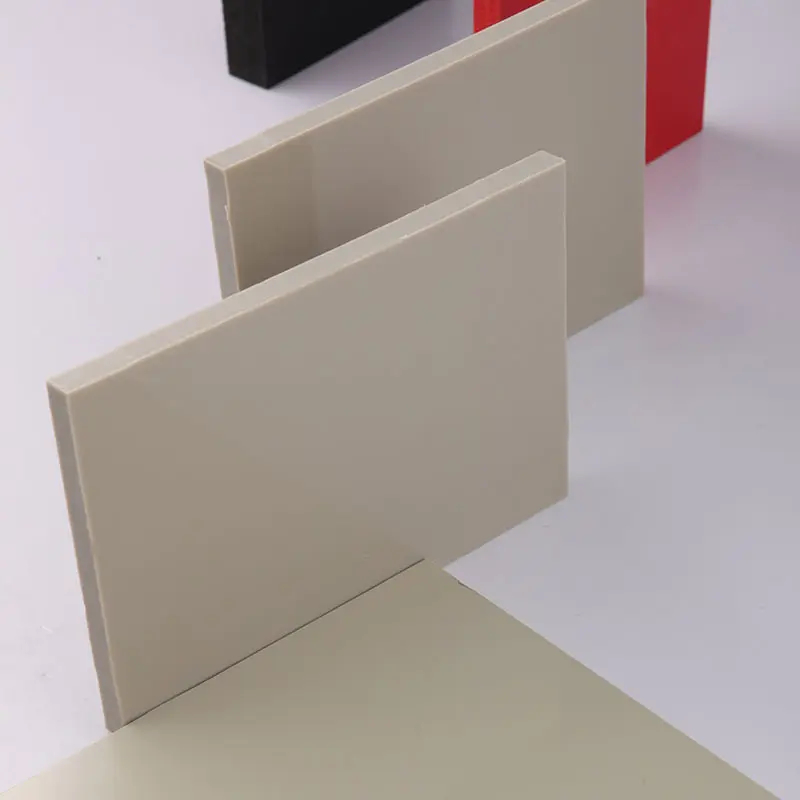ਨਵੰ. . 25, 2024 10:30 Back to list
ppr hot water pipe
The Advantages of PPR Hot Water Pipes A Comprehensive Overview
PPR, or Polypropylene Random Copolymer, has garnered significant attention in the plumbing sector, particularly for hot water applications. The increasing demand for efficient, reliable, and environmentally friendly piping systems has led to the rising popularity of PPR hot water pipes. In this article, we will delve into the unique properties, advantages, and applications of PPR hot water pipes, illustrating why they are becoming the go-to choice for modern plumbing needs.
What is PPR?
PPR pipes are made from a thermoplastic polymer that is notable for its resistance to high temperatures and pressures. This composition makes PPR particularly suitable for conveying hot water, which is why it has become a favorite in residential, commercial, and industrial plumbing applications. The material's unique properties allow it to maintain its structural integrity under extreme conditions, ensuring long-term performance.
Key Advantages of PPR Hot Water Pipes
1. Resistance to High Temperatures One of the standout features of PPR hot water pipes is their ability to withstand elevated temperatures. PPR pipes can typically handle water temperatures up to 95°C (203°F) without deteriorating. This characteristic makes them ideal for hot water supply systems, ensuring that the water remains hot over extended periods.
2. Corrosion Resistance Unlike metal pipes which can corrode over time, PPR pipes are resistant to rust and corrosion. This resistance prolongs the life of the piping system and minimizes maintenance costs. Homeowners and builders can rely on PPR pipes for consistent performance without the worry of leaks and deterioration.
3. Low Thermal Conductivity PPR pipes have low thermal conductivity, which means they are effective at insulating hot water. This property helps to minimize heat loss, making them energy-efficient and cost-effective choices for homeowners aiming to reduce their energy bills. The reduced energy consumption not only saves money but also decreases the carbon footprint.
ppr hot water pipe

4. Ease of Installation PPR hot water pipes are lightweight and easy to handle, making installation a straightforward process. They can be joined using a fusion welding technique, eliminating the need for fittings and connectors that are commonly required in traditional piping systems. This reduces the potential for leaks and enhances the overall reliability of the plumbing system.
5. Environmental Considerations PPR is considered a more eco-friendly option compared to traditional materials like PVC or metal. The production process is less harmful to the environment, and the long lifespan of PPR pipes means that fewer resources are consumed over time. Furthermore, PPR pipes are recyclable, which aligns with the growing trend towards sustainability in construction and plumbing.
Applications of PPR Hot Water Pipes
PPR pipes are adaptable and can be used in a wide range of applications. In residential settings, they are commonly used for hot water supply lines, heating systems, and underfloor heating setups. Their properties make them suitable for both new constructions and renovations. In commercial and industrial settings, PPR pipes are used in hot water piping systems and for transporting liquids where reliability and temperature control are paramount.
Furthermore, PPR hot water pipes are increasingly used in central heating systems. They can efficiently transport heated water throughout the building, providing consistent warmth without the risk of pipe failure due to temperature fluctuations.
Conclusion
In conclusion, PPR hot water pipes are emerging as a superior choice for modern plumbing applications. Their resistance to high temperatures, durability, low thermal conductivity, ease of installation, and environmental friendliness position them as a frontrunner in the plumbing industry. As more homeowners and builders recognize the benefits of using PPR pipes, it is likely that they will continue to gain popularity in both residential and commercial projects. By opting for PPR, consumers not only ensure the efficiency and longevity of their plumbing systems but also contribute to more sustainable building practices. Whether you’re considering a new plumbing installation or a renovation, PPR hot water pipes are indeed a smart investment.
-
Durable PP Rigid Sheet: Lightweight, Chemical Resistant Solutions
NewsAug.21,2025
-
PVC Grey Sheet for Extraction: Chemical Resistant & Durable
NewsAug.19,2025
-
Durable PVC Pipe Fittings for Plumbing & Irrigation Needs
NewsAug.18,2025
-
HDPE Steel Belt Reinforced Spiral Corrugated Pipe | High Strength
NewsAug.17,2025
-
HDPE Pipe Fittings: Durable, Leak-Proof Solutions
NewsAug.16,2025
-
Premium CPVC Sheet: High-Temp & Chemical Resistant Solutions
NewsAug.15,2025

